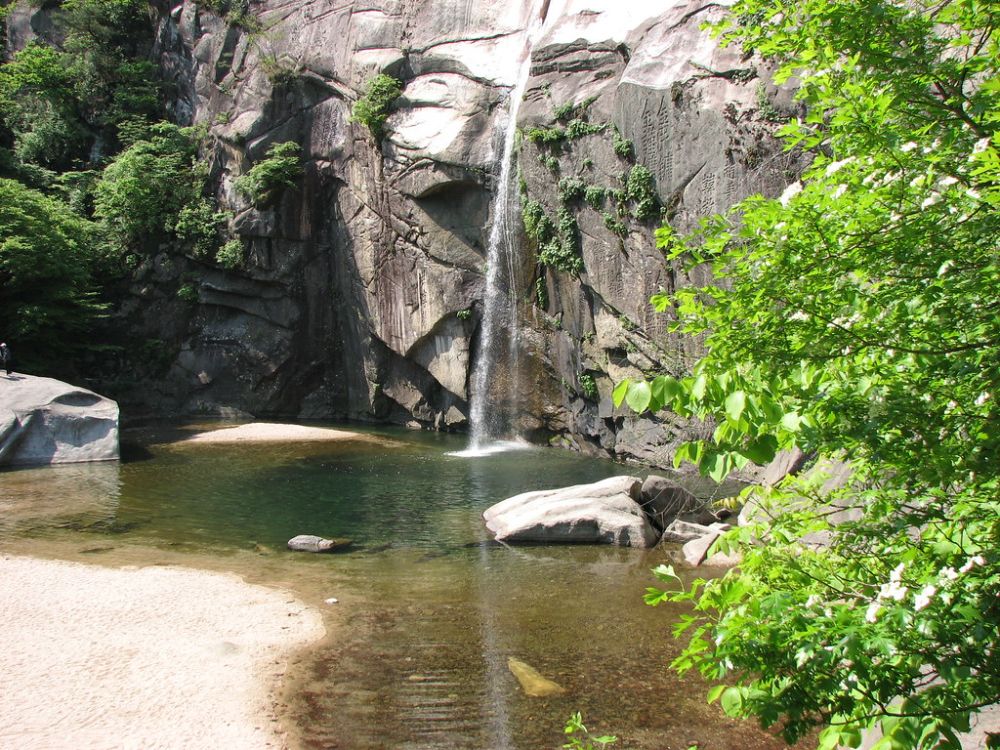

Located in the captivating region of Kaesong, North Korea, the Pakyon Waterfall is one of the country's natural treasures that has remained relatively unknown to the outside world. Historically, North Korea has been an enigmatic destination, with tourism controlled and regulated by the state. Nonetheless, locations like Pakyon Waterfall offer a glimpse into the country’s pristine natural beauty.
Tourism in North Korea has a relatively short history, with the industry being heavily state-regulated. The country began to open up to foreign tourists on a limited basis in the late 20th century. Initial tourism efforts were focused on showcasing the grandeur of Pyongyang and other significant historical and cultural landmarks under strict supervision. Natural sites like the Pakyon Waterfall were not the primary focus for these early tours.
Over the years, tourism ventures have slowly expanded into other areas, including the historical city of Kaesong and its surrounding landscapes. While information about North Korean tourism is scarce, the Pakyon Waterfall offers an off-the-beaten-path experience for those few who are able to visit the secluded nation.
The Pakyon Waterfall is a part of the Pakyon Falls Group, which consists of 12 waterfalls along the Pakyon River. With a history that dates back to the Koryo Dynasty, the waterfall is noted not just for its natural beauty, but also for its cultural and historical significance. Through the limited tourism that North Korea accommodates, Pakyon Waterfall has started to emerge as a notable point of interest, particularly for those interested in both nature and history.
In recent years, North Korea has shown an interest in bolstering its tourism sector as a means of generating revenue and promoting a more positive image globally. There have been developments in infrastructure and the creation of specialized tours that focus on specific interests such as the Arirang Mass Games, the Pyongyang Marathon, and nature excursions.
While still highly controlled and curated, these tours provide very limited windows into the lives of the North Korean people and the natural beauty of the country. Experiences such as the visit to the Pakyon Waterfall are carefully managed to ensure that travelers only see what the government permits.
Those considering a visit to Pakyon Waterfall and North Korea as a whole must remember that tourism is still tightly controlled. All tours are conducted under the guidance of state-approved guides, and there is little freedom to explore independently. It is essential that visitors abide by the local laws and customs to ensure a safe and respectful visit.
For the adventurous and intrepid traveler, a visit to the Pakyon Waterfall in Kaesong offers an unparalleled opportunity to witness one of North Korea's lesser-known natural wonders. As the tourism landscape of the country slowly evolves, it is possible that Pakyon Waterfall and similar sites may become more accessible in the future.
The future of tourism in North Korea is unpredictable, and much will depend on the political climate and the country's willingness to open up more broadly to foreign visitors. However, the allure of its unspoiled landscapes, historical monuments, and the mystery that shrouds the nation continues to intrigue visitors from around the world, suggesting that there is potential for growth in the tourism sector.
The beauty of Pakyon Waterfall is undeniable, and for those few who can witness it, it remains a breathtaking reminder of the power and beauty of nature - even in the world's most closed-off countries.